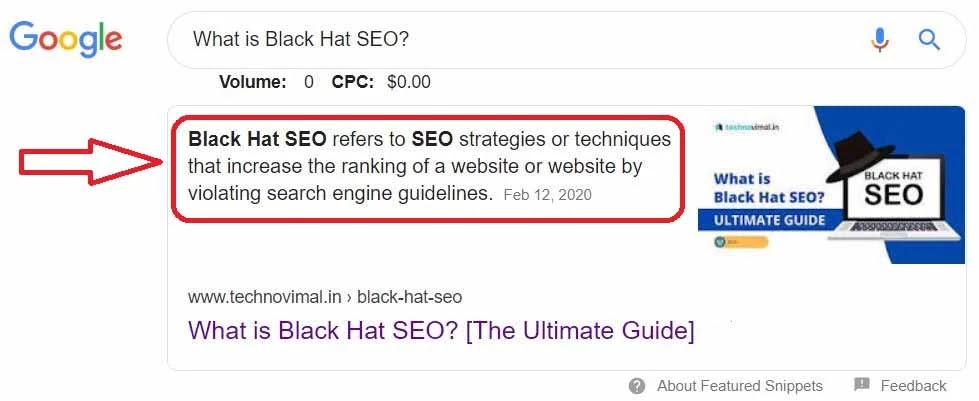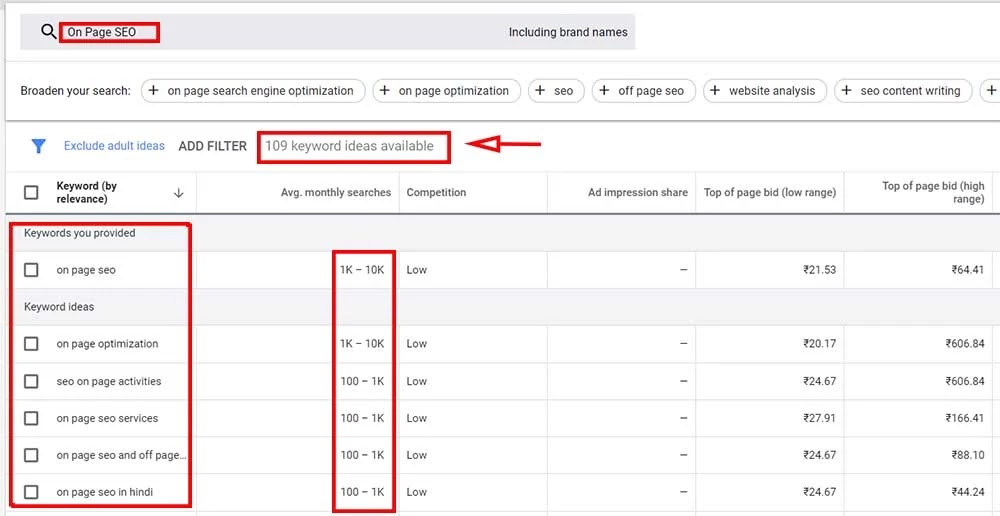On-page SEO refers to the optimization of sites by various practices like content optimization, keyword research, meta tags to rank higher within the program result page (SERP).
What is On-Page SEO?
SEO on the page (also known as SEO on the site) refers to the practice of optimizing sites to increase the ranking of programs on a website and gain organic traffic.
In addition to publishing relevant and high-quality content, SEO on the page involves customizing your title, HTML tags (title, goal, and header) and images. It also means guaranteeing a high level of experience, authority, and reliability on your website.
This takes into account several aspects of the website, which when added, will improve the visibility of your website in the search results.
Read: Off-page SEO: The Ultimate Guide
Why On-Page SEO Is Important
SEO on the page is important because it helps search engines understand your website and its content, as well as identify if it is relevant to a search engine query.
As search engines become more sophisticated, search engine results pages (SERPs) focus more on relevance and semantics.
Google, with its vast number of sophisticated algorithms is even better now:
- Understand what users are really looking for when they type a query.
- Providing search results that meet user objectives (informative, shopping, navigation).
Adaptation is essential with this development, and you can do this by ensuring both the content that is visible to users and only those elements on your web pages (such as text, images, video or audio) is visible in search engines (such as HTML tags, structured data): the latest best practices. Accordingly, they have been well adapted.
Also you should not just avoid SEO on the page because unlike off-page SEO with external signals (that are, backlinks) you have more control when optimizing content on the site.
If you follow the strategies on the page, you will see an increase in traffic and an increase in your search presence.
This guide will guide you through the most important elements of SEO on the page.
Paying close attention to these 10 areas will help you improve your content and authority and increase your rankings, traffic, and conversions.
15 Useful On-Page SEO Checklist:
1. Meta Title
Meta titles play an important role in website rankings. If your headline is satisfying, just bother people to click on it. Modern Google algorithm requires that the title be between 50 and 55 characters long. Contemporary Google settings show titles of 50-55 characters in length (space included), and the rest are hidden.
Syntax: <title>Your Title Here Like this.</title>

2. Meta Description
Meta description tags are used to show an overview of their content for both users and search engines.
The meta description must be between 150 and 160 characters because the search engine only shows descriptions of up to 160 characters.
If your meta description is good, there is a possibility that your content will appear in the featured snippet of the search engine results page (SERP).
Optimizing meta description correctly can help improve:
- Click-through rate (CTR).
- Perception of the quality of the result.
- Perception of what your website offers all change
Syntax: <Meta name=” description” content=” the description which you want to display”/>

3. Keyword Research
Keywords are an important part of SEO. Keep checking the foremost searched keywords using the simplest SEO tools and post content only on them. you’ll use Google Keyword Planner, Keyword Everywhere, Ubersuggests, AnswerThePublic.
Target the keywords that have an inquiry volume of 1000+ searches per month. you’ll target the keywords like Informative keywords (For example, SEO and Blogging), Transactional keywords (For example, keywords including ‘best’ and ‘top’ word), Location-Based keywords.
Always add the keyword in your title and meta description. The focused keyword should be present 5-6 or more times within the article, counting on the content length. Also, use the target keyword within the first 100 words of your content.

4. Heading Tags
Title tags are HTML elements (H1-H6) that are used to identify titles and subtitles of other types of content (for example, paragraph text) in their content.
Title tags are not as critical for the ranking of your site, as these provide an important function for your users and your SEO.
These may indirectly affect your classification:
- Make your content easier to read and more enjoyable.
- Provides rich keyword context for your search engine content

5. User-Friendly URLs
Your priority should be the user because if you’ll satisfy the user, meaning you’ve got already met the wants of the program. Make use of SEO-friendly URLs and concentrate on the primary three to four words of it because shorter URLs rank far better.
Avoid using lengthy URLs like https://technovimal.in/what-is-blog-and-how-does-it-work-in-2020
Avoid using ugly URLs like https://technovimal.in/2019/03/11/what-is-blog-blogging-blogger/
Try using URLs as simple as https://www.technovimal.in/how-to-start-a-blog.html

Conclusion
SEO on the page is the basics of SEO. This is more than fools if you do not optimize your website content and switch to other SEO media. As an SEO suggestion, always use the keyword in the first 100 words of your post. I hope you found this SEO guide on the information site.
Let me know in the comments if anything is not clear.


